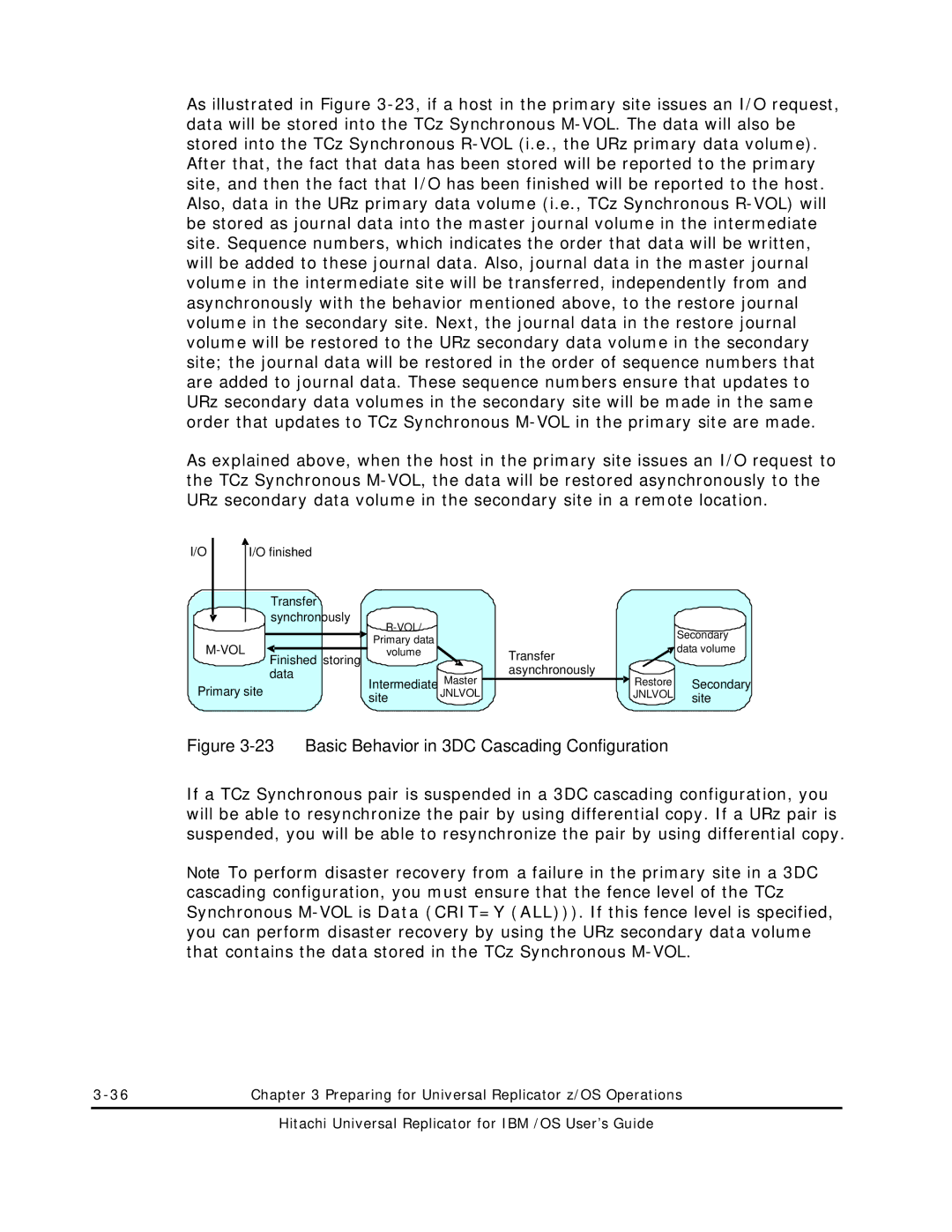
As illustrated in Figure 3-23, if a host in the primary site issues an I/O request, data will be stored into the TCz Synchronous M-VOL. The data will also be stored into the TCz Synchronous R-VOL (i.e., the URz primary data volume). After that, the fact that data has been stored will be reported to the primary site, and then the fact that I/O has been finished will be reported to the host. Also, data in the URz primary data volume (i.e., TCz Synchronous R-VOL) will be stored as journal data into the master journal volume in the intermediate site. Sequence numbers, which indicates the order that data will be written, will be added to these journal data. Also, journal data in the master journal volume in the intermediate site will be transferred, independently from and asynchronously with the behavior mentioned above, to the restore journal volume in the secondary site. Next, the journal data in the restore journal volume will be restored to the URz secondary data volume in the secondary site; the journal data will be restored in the order of sequence numbers that are added to journal data. These sequence numbers ensure that updates to URz secondary data volumes in the secondary site will be made in the same order that updates to TCz Synchronous M-VOL in the primary site are made.
As explained above, when the host in the primary site issues an I/O request to the TCz Synchronous M-VOL, the data will be restored asynchronously to the URz secondary data volume in the secondary site in a remote location.
I/O | I/O finished | | | | | |
| Transfer | | | | | |
| synchronously | R-VOL/ | | | |
| | | | | Secondary |
M-VOL | | | Primary data | | |
| | | | data volume |
Finished | storing | volume | | Transfer |
| | | |
| data | | | Master | asynchronously | |
Primary site | | Intermediate | Restore | Secondary |
| site | JNLVOL | JNLVOL | site |
Figure 3-23 Basic Behavior in 3DC Cascading Configuration
If a TCz Synchronous pair is suspended in a 3DC cascading configuration, you will be able to resynchronize the pair by using differential copy. If a URz pair is suspended, you will be able to resynchronize the pair by using differential copy.
Note: To perform disaster recovery from a failure in the primary site in a 3DC cascading configuration, you must ensure that the fence level of the TCz Synchronous M-VOL is Data (CRIT=Y (ALL))). If this fence level is specified, you can perform disaster recovery by using the URz secondary data volume that contains the data stored in the TCz Synchronous M-VOL.
3-36 | Chapter 3 Preparing for Universal Replicator z/OS Operations |
Hitachi Universal Replicator for IBM /OS User’s Guide

